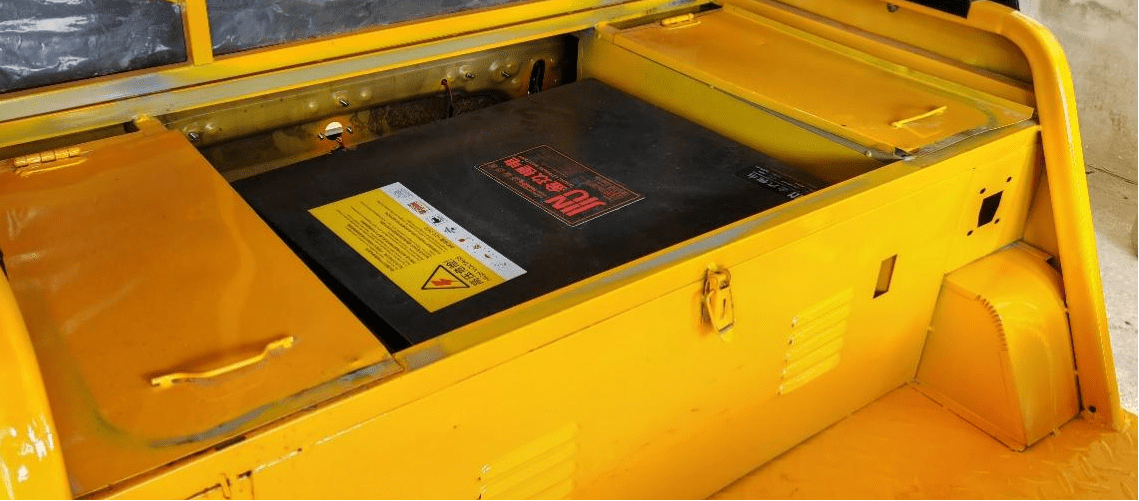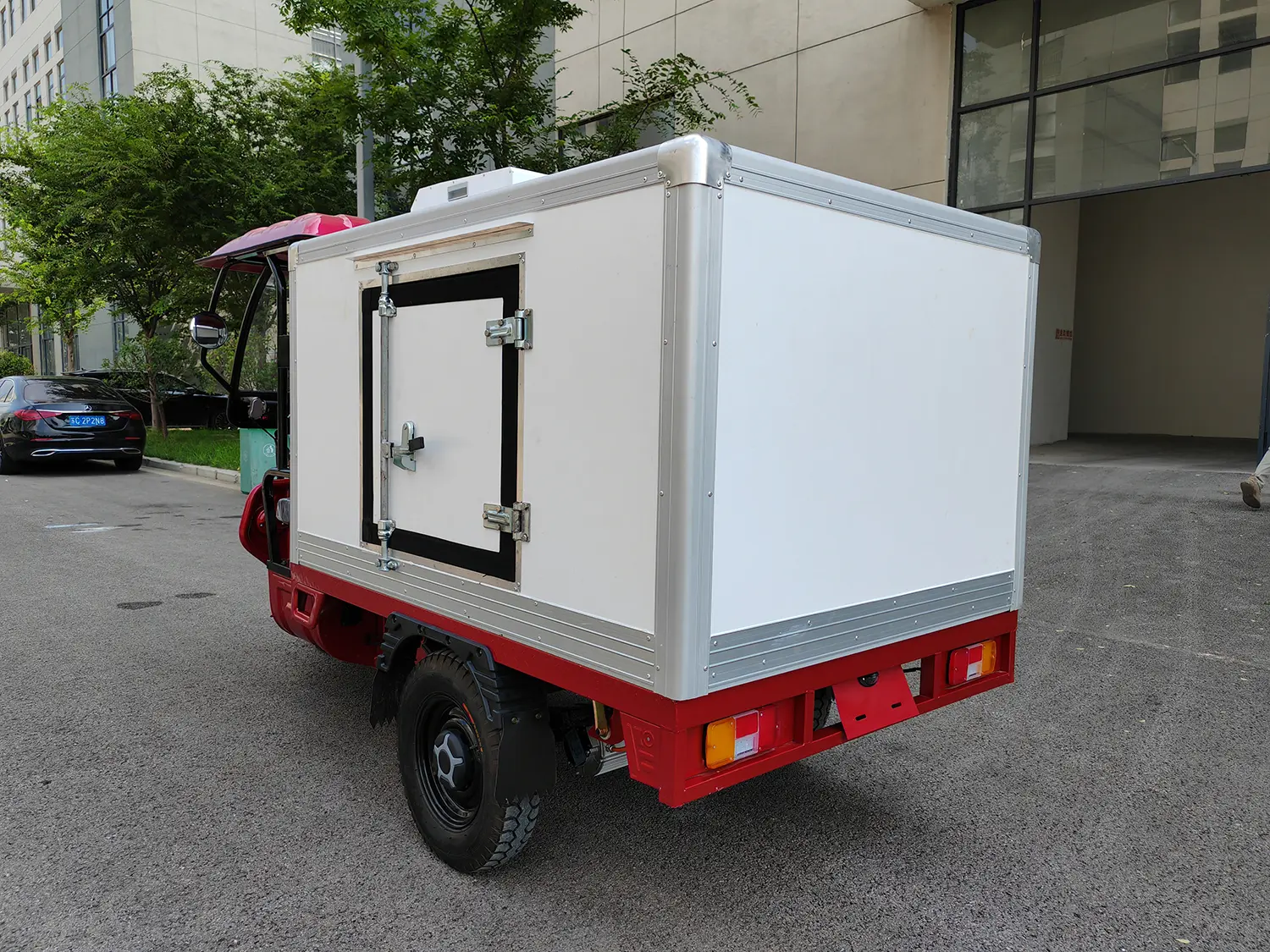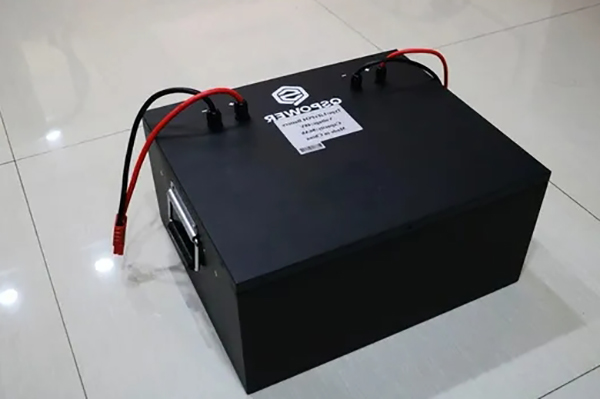As a manufacturer of electric tricycles, the number one question I get from fleet managers and business owners is about the battery. It’s the heart of your electric trike, the engine that powers every ride, and the component that represents the most significant long-term cost. Understanding how long electric tricycle batteries last isn’t just a matter of curiosity—it’s critical for calculating your return on investment. This guide will give you a clear, honest look at battery lifespan. We’ll cover what to expect, how to extend the life of your battery through proper care, and how to know when it’s time to replace it. Let’s make sure every charge takes your business further.
What is the Average Lifespan of Electric Tricycle Batteries?
Let’s get straight to the point. For a quality electric tricycle using a modern lithium-ion battery, you can generally expect the battery to last between 3 to 5 years. Some high-end batteries might even push towards 6 years with excellent care. However, time is only one way to measure this. A more accurate metric is the number of charge cycles.
Most lithium-ion batteries are rated for 500 to 1,000 full charge cycles. A "charge cycle" means one full discharge down to empty and one full charge back up to 100%. If you ride your electric bike every day and drain the battery completely, you’ll use up those cycles faster. Conversely, if you only use 50% of your battery‘s capacity on a ride and then charge it, that only counts as half a cycle.
So, a battery‘s lifespan is a combination of its age and its usage. Even a lightly used battery will experience some degradation over time due to natural chemical aging. For a commercial fleet, where an electric tricycle is used daily for a work commute or deliveries, expecting a replacement around the 3-year mark is a realistic financial projection.
How Does a Charge Cycle Affect Your Battery’s Longevity?
Understanding the charge cycle is the key to understanding battery life. As mentioned, one full charge cycle is a full drain and a full charge. Every time your lithium battery goes through this process, a tiny amount of its capacity is permanently lost. It’s a very slow, natural process of wear and tear at a chemical level.
Think of it like a tire. Every mile you drive wears away a tiny bit of tread. You can’t see the difference after one ride, but after thousands of miles, the wear becomes obvious. A charge cycle is the "mile" for your battery. This is why a battery rated for 800 cycles will generally last much longer than one rated for 400 cycles.
This concept also explains why proper charging habits are so important. Avoiding deep discharges and frequent full charges can significantly extend the battery‘s longevity. Partial charges are much gentler on the battery. For example, charging from 30% to 80% is less stressful on the internal components than charging from 0 miles of range to a full 100 percent. This is the secret to making your electric tricycle battery last longer.

What Type of Battery Do Most Modern E-Trikes Use?
In the world of electric vehicles, from e-bikes to Teslas, one type of battery technology reigns supreme: lithium-ion. Modern, high-quality e-trikes almost exclusively use lithium-ion batteries, and for good reason. While older or cheaper models might still use lead-acid batteries, the advantages of lithium-ion are undeniable, especially for commercial use.
Here’s a quick comparison:
| Feature | Lithium-Ion (Li-ion) Battery | Lead-Acid Battery |
|---|---|---|
| Weight | Lightweight | Very Heavy |
| Lifespan | 500-1000+ charge cycles | 200-300 charge cycles |
| Energy Density | High (more power in a smaller package) | Low |
| Maintenance | Virtually none | Requires regular checks |
| Cost | Higher initial cost | Lower initial cost |
For a business, the choice is clear. A lithium-ion battery is much lighter, which means your electric tricycle is more efficient and can achieve more miles on a single charge. While the upfront cost is higher, the vastly longer lifespan and lack of maintenance mean the total cost of ownership is much lower. You’ll replace a lead-acid battery 2-3 times in the same period you’d use one lithium battery. That’s why our reliable commercial vehicles, like the EV31 Electric passenger tricycle, are equipped with high energy density lithium-ion batteries.
How Do Your Riding Style and Terrain Impact Battery Life on Every Ride?
How far you can go on a single charge is not a fixed number. The advertised maximum range from the manufacturer is based on ideal conditions. In the real world, several factors can significantly reduce that range and put more strain on your battery.
- Rider and Cargo Weight: This is the biggest factor. A heavier rider or a trike loaded with cargo requires the motor to work harder, which will drain the battery faster. An empty cargo trike will always get more miles per charge than a fully loaded one.
- Terrain: Riding on flat, smooth pavement is easy on the battery. Riding uphill requires a huge amount of power and will deplete your charge very quickly. Similarly, rough terrain like gravel or dirt increases resistance and drains the battery.
- Riding Style: Aggressive riding with fast acceleration uses much more energy than a smooth, gradual start. Maintaining a steady, moderate average speed is the most efficient way to ride. Constant starting and stopping in city traffic will also use more battery than a steady suburban commute.
- Tire Pressure: Underinflated tires create more rolling resistance, forcing the motor to work harder and reducing your range. It’s a simple but often overlooked part of maintenance.
For a fleet manager, it’s important to understand these variables to plan routes and charge schedules effectively.

What Are the Best Charging Practices to Extend Battery Life?
How you charge your battery has the biggest impact on its long-term health. Bad charging habits can shorten a battery‘s life by half, while good charging practices can help you get the most out of it. As a manufacturer, this is the advice we give all our clients.
Follow these rules to maximize your battery’s lifespan:
- Use the Right Charger: Always use the charger that came with your electric tricycle. A non-matching charger can have the wrong voltage or amperage, which can permanently damage your battery.
- Don’t Leave it on the Charger: Once the battery is fully charged, unplug it. Most modern chargers are smart, but leaving a battery constantly plugged in can still cause minor stress. Don’t leave it to charge overnight, every night. Use a timer if you need to.
- The 20-80 Rule: The sweet spot for lithium-ion batteries is between 20% and 80% charge. Try to avoid full discharges to 0% and, when possible, stop charging around 80-90% for daily use. Only charge to 100% when you know you’ll need the full range for longer rides.
- Charge After Every Ride: It’s better to top off your battery after a short ride than to let it sit with a low charge. Li-ion batteries are happy to be topped up.
- Let the Battery Cool Down: After a long, hard ride, the battery may be warm. Let it cool to room temperature for about 30 minutes before you plug in the charger. Also, let it rest for a bit after charging before you go for another ride.
Following these simple rules will pay huge dividends in the longevity of your battery.
Does Temperature Affect How Long an Electric Tricycle Battery Lasts?
Yes, absolutely. Lithium-ion batteries are like people—they are happiest at a comfortable room temperature. Extreme heat and cold are their enemies, affecting both their performance on a single ride and their long-term health.
- Cold Weather: In freezing temperatures, the chemical reactions inside the battery slow down. This temporarily reduces its capacity and output. You will notice a significant drop in your electric bike‘s range on a cold day. When you bring the battery back inside and it warms up, this range will return. However, you should never charge a frozen battery. Always let it warm up to room temperature first, or you can cause permanent damage.
- Hot Weather: High heat is even more dangerous for a battery. It accelerates the natural aging and degradation of the battery cells. Never leave your electric trike or its battery in a hot car or in direct sunlight for extended periods. When charging, make sure the battery and charger have good air circulation to dissipate heat.
For fleet operations in climates with extreme temperatures, managing your batteries’ exposure is a key part of your maintenance routine.

What is Proper Battery Maintenance and Storage for Your Electric Trike?
Beyond charging, a little bit of regular maintenance can go a long way. Lithium-ion batteries are very low-maintenance compared to other types, but they aren’t "no-maintenance."
For long-term storage (for example, over the winter), the procedure is critical. If you plan to store your electric bike for more than a few weeks, follow these steps:
- Charge or Discharge to a Moderate Level: The ideal storage level for a lithium battery is between 40% and 60% charge. Storing a battery fully charged or completely empty for months can cause significant capacity loss.
- Store in a Cool, Dry Place: Find a location that is protected from extreme temperatures and moisture. A climate-controlled garage or indoor space is perfect.
- Check the Charge Periodically: Every month or two, check the battery‘s charge level. If it has dropped significantly, top it back up to the 40-60% range.
For regular maintenance, simply keep the battery and its contacts clean and dry. A visual inspection to ensure there’s no damage to the casing or wiring is also a good habit.
When Do You Know It’s Time to Replace Your E-Trike Battery?
Even with the best care, all batteries eventually wear out. Knowing when replacement is necessary is important for keeping your e-trikes reliable. You don’t want a rider stranded because of a failed battery.
The most obvious sign is a dramatic reduction in range. When a fully charged battery gives you only a fraction of the miles on a single charge it used to, its health is declining. Generally, when a battery reaches about 70-80% of its original capacity, it’s nearing the end of its useful life for demanding commercial applications. You might still get some usable life out of it for short, non-critical trips, but its performance will be unpredictable.
Other signs that you need to replace your battery:
- The battery no longer holds a charge. It might show 100% on the charger but drain very quickly.
- The battery casing is cracked, bulging, or leaking. If you see any physical damage, stop using it immediately.
- The battery shuts off unexpectedly during a ride, even when the display shows it has reserve power left.
When it’s time for a replacement, always buy a high-quality battery from the original manufacturer or a reputable supplier to ensure compatibility and safety.
How Do You Safely Handle the Disposal of an Old Battery?
When your electric tricycle battery reaches its retirement, you can’t just throw it in the trash. Lithium-ion batteries contain materials that can be harmful to the environment if they end up in a landfill. Responsible disposal is essential.
The good news is that the valuable materials inside a lithium battery, like cobalt and lithium, can be recovered and reused. You need to recycle your old ebike battery. Many bike shops, electronics stores, and municipal waste facilities have special collection programs for lithium-ion batteries.
"As a manufacturer, we feel a responsibility for the entire lifecycle of our product. We encourage all our customers to find certified e-waste recyclers for their old batteries. It’s a critical step in making our industry truly sustainable." – Allen, Factory Director
Before you need a replacement, research local recycling options so you have a plan. Proper disposal protects the environment and ensures the valuable materials in your old battery can be used to build the next generation of clean electric vehicles.
Can You Upgrade or Use a Second Battery on Your Electric Trike?
This is a common question from users who want more range for their daily ride or for special longer rides. The answer depends on the design of your electric tricycle.
Some electric bike models are designed to accommodate a second battery. This can effectively double your range and is a great option for heavy users. If your trike has this feature, it’s a fantastic way to eliminate range anxiety. The Electric cargo tricycle HJ20, for instance, can be configured with different battery options to meet various range requirements.
If you’re thinking about upgrading to a larger capacity battery, you must consult the manufacturer. The new battery needs to be compatible with your trike‘s motor and controller. Using an incompatible battery can be dangerous and could damage your electric system. A smart battery management system (BMS) is designed to work with a specific cell chemistry and voltage, so simply swapping for a bigger battery isn’t always a simple repair. Always prioritize safety and compatibility when considering a battery upgrade.
Key Takeaways
- Average Lifespan: Expect 3 to 5 years or 500-1,000 charge cycles from a quality lithium-ion electric tricycle battery.
- Charging is Key: The best way to extend battery life is through smart charging practices. Avoid constant full charges and deep discharges, and always use the correct charger.
- Environment Matters: Keep your battery away from extreme heat and cold, both during your ride and in storage, to preserve its health.
- Know When to Replace: A significant drop in range is the clearest sign that your battery is aging. When a battery reaches 70-80% of its original capacity, it’s time to plan for a replacement.
- Recycle Responsibly: Never throw an old li-ion battery in the regular trash. Find a local e-waste recycling center for proper disposal.
Post time: 10-29-2025




